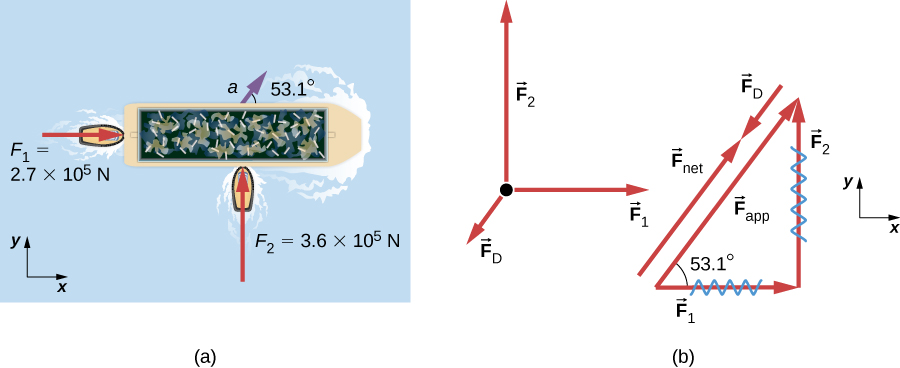| << Chapter < Page | Chapter >> Page > |
We have given a variety of examples of particles in equilibrium. We now turn our attention to particle acceleration problems, which are the result of a nonzero net force. Refer again to the steps given at the beginning of this section, and notice how they are applied to the following examples.

The drag of the water is in the direction opposite to the direction of motion of the boat; this force thus works against as shown in the free-body diagram in [link] (b). The system of interest here is the barge, since the forces on it are given as well as its acceleration. Because the applied forces are perpendicular, the x - and y -axes are in the same direction as and The problem quickly becomes a one-dimensional problem along the direction of , since friction is in the direction opposite to Our strategy is to find the magnitude and direction of the net applied force and then apply Newton’s second law to solve for the drag force
The angle is given by
From Newton’s first law, we know this is the same direction as the acceleration. We also know that is in the opposite direction of since it acts to slow down the acceleration. Therefore, the net external force is in the same direction as but its magnitude is slightly less than The problem is now one-dimensional. From the free-body diagram, we can see that
However, Newton’s second law states that
Thus,
This can be solved for the magnitude of the drag force of the water in terms of known quantities:
Substituting known values gives

Notification Switch
Would you like to follow the 'University physics volume 1' conversation and receive update notifications?